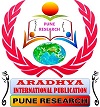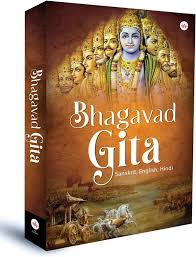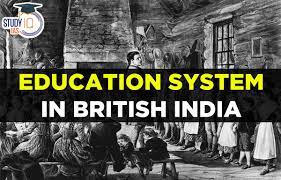VOL- 9, ISSUE- 1, PUNE RESEARCH WORLD (ISSN 2455-359X) JIF 3.638
9.1 WORLD
Area of Article : ALL

VOL- 9, ISSUE- 1, PUNE RESEARCH WORLD (ISSN 2455-359X) JIF 3.638
9.1 WORLD

VOL- 9, ISSUE- 1, PUNE RESEARCH WORLD (ISSN 2455-359X) JIF 3.638
9.1.1 WORLD

In
the Bhishma Parva of the Mahabharata (Book-6), it is spread over in the
chapters from 23-40. Again in the Gita there are 18 chapters that contain 700
verses written in Sanskrit. This celestial song is supposed to have been written
by the god Ganesha when the great sage Veda Vyasa was dictating. This is set in
the narrative framework of dialogue between Arjuna, the third Pandava Prince
and his charioteer Sri Krishna, an incarnation of Lord Vishnu. It is originated
in the Kurukshetra War between the Kauravas and the Pandavas. At the start of the war, Arjuna feels
despaired as he has to fight with and kill his relatives, family members and
great people like Bhishma, Drona (Guru), Krupa and his cousins Kauravas. He is
emotionally preoccupied with these sorrowful feelings and loses heart and is
unwilling to take part in the war. He is
crestfallen and puts himself in a dilemma. At this point of Arjuna’s disillusionment
and indecision, Lord Krishna comes to his rescue and helps him come out of his
desperation and makes him ready to fight with his magical words of advice.
Sanjaya with his mystical sight narrates the war scene to the blind emperor
Dhritarashtra. This celestial song of Sri Krishna is bejeweled with many
dharmas, three gunas, ethical values, cyclical birth and death, Soul and its
immortality, body and its mortality and so on. Each chapter is a diamond that
glows and reveals the universal values, applicable to all persons irrespective
of caste, creed and sex. My paper emphasizes on the literature of the Gita that
contains these values necessary for all, especially for the students who need
to upgrade themselves to improve their personality and character.
Key Words: celestial song, incarnation,
crestfallen, disillusionment, bejeweled with, mystical sight
VOL- 9, ISSUE- 1, PUNE RESEARCH WORLD (ISSN 2455-359X) JIF 3.638
9.1.2 SCHOLAR

The COVID-19 pandemic has
profoundly impacted Nepal'seducationsystem,leading to significant disruptions
in learning due to prolonged school closures and the rapid transition to online
education. This article explores the various challenges faced by the education
sector in Nepal, including technological barriers, socio-economic disparities,
and the psychological effects on students and teachers. The pandemic has
exacerbated existing inequalities, with students from lower socio-economic
backgrounds and rural areas experiencing greater difficulties in accessing
education. In response, the Nepalese government, along with community groups
and non-governmental organizations, has implemented several remedial measures.
These include enhancing digital infrastructure, providing teacher training for
online education, and offering mental health support to mitigate the pandemic's
adverse effects. This article provides a comprehensive overview of these
challenges and remedial measures, offering insights into the current state and
future outlook of Nepal's education system in the wake of COVID-19.
Keywords:COVID-19,RemoteLearning, ,
Socio-economic Disparities, Government Policies, , Educational Inequality,
Curriculum Disruption, Teacher Training, Community Initiatives, Digital Literacy.
VOL- 9, ISSUE- 1, PUNE RESEARCH WORLD (ISSN 2455-359X) JIF 3.638
9.1.101 वर्ल्ड

प्राचीन काळी भारतात गुरुकुल शिक्षण पद्धती प्रचलित होती,
जी प्रामुख्याने गुरू - शिष्य परंपरेवर आधारित होती. प्राचीन काळी कुटुंब, गुरुकुल,
मठ, विहार, मंदिर इत्यादी शिक्षणाची मुख्य केंद्रे होती. हे शिक्षण तोंडी असायचे, तर
मध्ययुगीन काळात मुस्लीम आक्रमणा नंतर भारतावर मुस्लीम शासकांचे राज्य सुरू झाले. मुस्लीम
शासकांनी सुद्धा शिक्षणाला प्रोत्साहन दिले.
मौलवी मक्तबांमध्ये शिक्षण देत असत. याशिवाय खानकाह, मशीद, दर्गा इत्यादी ठिकाणी
शिक्षण दिले जात असे. मध्ययुगात फारसी ही शिक्षणाची माध्यमभाषा होती. 14 व्या शतकाच्या
आसपास अरबी, फारसी आणि हिंदीच्या मिश्रणातून एक नवीन शैली विकसित झाली, ज्याला ‘उर्दू‘
म्हटले गेले. भारतात ब्रिटीश राजवटीची स्थापना झाल्यानंतर
तिथे हजारो वर्षे जुनी शिक्षणपद्धती हळूहळू संपुष्टात आली. मात्र काही साहसी इंग्रज
अधिकारी यांनी शिक्षणाच्या क्षेत्रात सुधारणा करण्याचे प्रयत्न केलेत. कंपनीने आपल्या
वसाहती अर्थव्यवस्थेच्या अंतर्गत इंग्रजी शिक्षण प्रणाली लागू करण्याचा निर्णय घेतला
आणि आपल्या राजकीय, प्रशासकीय आणि आर्थिक गरजा पूर्ण करण्यासाठी आणि त्यासाठी सर्वप्रथम,
सन 1813 चा चार्टर कायदा लागू करण्यात आला.
त्यानंतर, गव्हर्नर जनरल लॉर्ड विल्यम बेंटिक यांनी मॅकॉलेच्या विचारांना मान्यता
देत, 7 मार्च 1835 रोजी एक ठराव जारी केला आणि इंग्रजी शिक्षण पद्धतीचा अवलंब केला.
त्यानंतर, आधुनिक शिक्षण प्रणाली 1854 च्या वुडचा अहवाल, 1882 च्या हंटर कमिशन,
1904 च्या भारतीय विद्यापीठ कायदा, 1917 च्या सॅड्लर विद्यापीठ आयोग, 1929 च्या फिलिप
हार्टोग समिती आणि इतर आयोगांद्वारे भारतात लागू करण्यात आली. या शैक्ष्णिक आयोगाद्वारे
भारतात शिक्षणाचा विकास व प्रसार झाला. यामुळे या काळात भारतात भारतात एक सुशिक्षीत
तरूण वर्ग निर्माण झाला. पुढे भारत स्वतंत्र झाल्यावर अशाच प्रकारच्या नव-नवीन शैक्षणिक
आयोगांच्या मार्फत भारत सरकारने शैक्षणिक प्रगती सुरू ठेवली.
कळ
शब्द:- प्राचीन, मध्ययुगीन, ब्रिटीश,
ईस्ट इंडिया कंपनी, चार्टर कायदा, मॅकॉले, वुडचा अहवाल, हंटर कमिशन, सॅड्लर विद्यापीठ
आयोग, फिलिप हार्टोग समिती, शिक्षणपद्धती